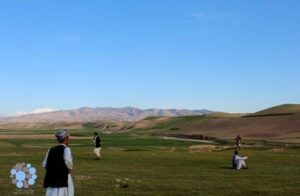.jpg)
After nearly a decade, Mercury; the smallest planet in our solar system, will once again travel between the Earth and sun that can be viewed between 15:40 and 18:43 Kabul local time on May 9.
It will be too small to see without the use of a telescope of high-powered binoculars; however, it is extremely important to use specialized solar filters for safe viewing for those trying to view the event first hand.
The safest (and easiest) option is undoubtedly to catch the show online. NASA and the ESA are running a livestream of the transit on their website, which means an uninterrupted mercury transit without the risk of going blind.
NASA has announced that the agency will broadcast coverage of the May 9 event, showcasing an occurrence that only happens roughly 13 times each century. As the smallest planet in our solar system makes its passage, it will appear as a silhouetted dot against the sun.
Transits of Mercury have long helped astronomers since viewing the event for the first time in 1631. In addition to providing a better understanding of the planet's disk size and the distance between the Earth and sun, transits now allow NASA to test their spacecraft and calibrate their instruments.
According to the Accuweather.com, the transit of Mercury only occurs when it is passing between the Earth and sun, and passing the Earth's orbital plane, which occurs in early May and November each year. The next occurrence will not be until November of 2019, and then not again until 2032.
.jpg)
Mercury is the baby planet in the solar system. At just 4,880 km in diameter, it is the smallest of all planets. Mercury is orbiting 46 to 70 million kilometers away from the Sun, making it the closest planet with the most eccentric orbit. One complete revolution takes about 88 days, meaning one Earth year is the equivalent to four years on Mercury.
However, counting solar days is much trickier if you are on Mercury. There, it takes 176 Earth days for the Sun to go around the sky once because of the so-called spin-orbit resonance. The orbit’s shape and the resonance result in an even weirder effect of the Sun actually slowing down, going backwards and then forward again.
Mercury’s surface is covered in bumps and rocks thanks to its many impacts with meteorites over the millions of years. A topographic animation from NASA shows the planet’s highest and lowest points, ranging from its highest at 2.78 miles (4.48 km) to the lowest at 3.34 miles (5.38 km).
Mercury is the smallest planet in the Solar System and the one closest to the Sun but to the strong light of the Sun it is not visible under normal circumstances.
ENDS





